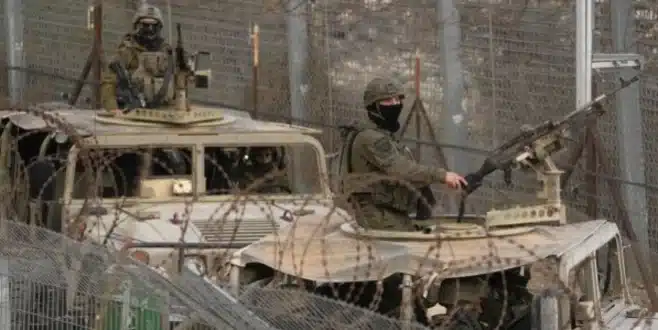Israel’s Defense Minister announced that the country’s military forces will maintain a long-term presence in newly expanded security zones in Gaza, Lebanon, and Syria, following the October 7, 2023, Hamas-led assault that triggered the ongoing conflict. These areas, carved out during the latest military operations, are described by Israeli authorities as essential buffers to prevent future attacks. However, critics argue that this continued presence closely resembles military occupation, a stance generally deemed illegal under international law when territory is seized by force.
The statement comes as Israel faces increasing scrutiny for retaining control over significant portions of Gaza and parts of southern Lebanon and Syria, despite previous commitments under ceasefire agreements. Defense Minister Israel Katz said forces would remain in these zones under any circumstance, signaling a permanent military footprint.
Israel’s strategy of securing new buffer zones has prompted strong backlash from neighboring countries. Lebanon and Syria have condemned the moves as violations of their territorial sovereignty. Hezbollah, weakened from prolonged conflict and lacking its former regional support, has warned of renewed conflict if Israel fails to withdraw from southern Lebanese outposts.
In Syria, following the ousting of President Bashar al-Assad, Israeli forces extended operations into territory beyond the Golan Heights. These expansions have included strikes against Syrian military assets and claims over new buffer regions, further escalating regional tensions.
The U.N.-brokered ceasefire between Israel and Hezbollah, in effect since late November, mandated a withdrawal of both Israeli troops and Hezbollah fighters from designated areas in southern Lebanon. However, Israel has kept troops in five strategic positions and continues to conduct airstrikes, citing threats from remaining Hezbollah infrastructure.
Meanwhile, Palestinians continue to demand full Israeli withdrawal from Gaza in exchange for a permanent ceasefire and the release of remaining hostages. With Israel now controlling more than half of Gaza and signaling intent to stay, peace negotiations are expected to face further complications.
The U.S. administration has yet to issue a response to Katz’s statement. However, during Donald Trump’s presidency, Washington recognized Israeli claims over contested regions like the Golan Heights and Jerusalem. Trump even floated controversial ideas such as placing Gaza under U.S. control post-conflict and resettling its Palestinian population abroad—proposals widely condemned by the international community and firmly rejected by Palestinians.
Israeli Prime Minister Benjamin Netanyahu has expressed support for the “voluntary emigration” of Palestinians and indicated that parts of Gaza may not be repopulated due to destruction caused by Israeli operations.


